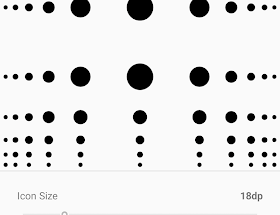In the age of digital advancements, where everything from banking transactions to personal communication happens online, ensuring robust security for our devices and data has become a top priority. While traditional methods like PIN codes, patterns, and biometric systems like fingerprints and facial recognition are common, there’s a new and innovative way to secure devices—Signature Lock Apps. These apps leverage a user’s unique signature as a means of authentication, providing both a personalized and secure method to safeguard smartphones, tablets, and other digital devices.
In this detailed post, we will explore how signature lock apps work, their key features, benefits, and how they’re transforming digital security in a creative and effective way.
What is a Signature Lock App?
A Signature Lock App is a type of mobile application that allows users to secure their devices by drawing a custom signature, similar to signing a document. Instead of entering a password, PIN, or using a fingerprint scanner, the app prompts the user to sign on the screen, and the system verifies the signature’s unique characteristics—such as the shape, speed, and pressure of the drawing—before granting access.
This method of device protection is not only unique but also highly personal, as a signature is a distinct identifier that is difficult to replicate. Just like handwritten signatures are used to verify identity in paper documents, digital signatures created through these apps can act as a secure and convenient way to unlock devices and safeguard sensitive data.
How Signature Lock Apps Work
Signature lock apps use a combination of pattern recognition algorithms, gesture-based technology, and artificial intelligence to capture and verify the signature. Here’s how they typically work:
- Setup Process:
- When you first install a signature lock app, the system will prompt you to set up your unique signature. You’ll be asked to draw your signature several times on the screen to help the app learn and recognize the specific characteristics of your writing.
- Data Capture:
- The app records not only the shape of your signature but also other important factors such as the speed, flow, direction, and pressure of your finger or stylus when you’re signing. This helps ensure that the signature is difficult to forge, as replicating someone’s writing dynamics is much harder than just copying the visual pattern.
- Storage and Encryption:
- Once the signature is captured, the app stores this data securely in encrypted form. This ensures that even if the device is compromised, the signature data remains safe and cannot be accessed by unauthorized users.
- Verification Process:
- When you attempt to unlock your device, the app will prompt you to sign on the screen again. The system then compares the new signature to the one stored during the setup process, analyzing the overall shape, dynamics, and pressure points to verify if the signature matches.
- Access Control:
- If the signature matches, the app grants access to the device. In cases where the signature doesn’t match or if an incorrect signature is attempted multiple times, additional security measures such as asking for a backup PIN or locking the device may be triggered.
Key Features of Signature Lock Apps
- Customizable Signatures:
Users can create a signature that is entirely unique to them. This can be a regular handwritten signature or even a special pattern that is personalized. Many apps allow for flexibility, ensuring that the signature can be a simple gesture or an elaborate design. - Multiple Security Layers:
Some signature lock apps offer the ability to add additional layers of security, such as backup PIN codes, passwords, or fingerprint authentication, in case the signature fails to match. This is helpful in ensuring that users are not locked out of their own devices. - Gesture Sensitivity:
Signature lock apps typically have highly sensitive gesture detection, capturing the intricacies of your signature, such as speed and pressure sensitivity, which makes it difficult for anyone to forge or replicate your signature with accuracy. - Encryption:
Security is paramount, and most signature lock apps employ strong encryption protocols to ensure that the signature data is stored safely on the device and cannot be accessed by hackers or malicious software. - Intruder Alerts:
Many signature lock apps offer features that notify the user if someone attempts to break into the device by trying to replicate the signature. Some apps even capture a photo of the intruder using the device’s front camera, making it easier to identify unauthorized access attempts. - Customization Options:
Users can often customize the look and feel of their signature lock app, such as the background theme, the ink color used for the signature, or even the sensitivity settings that control how precise the app should be in recognizing the signature. - App Lock Integration:
In addition to locking the entire device, signature lock apps often allow users to lock specific apps such as messaging apps, photo galleries, and banking apps. This ensures that even if someone gains access to the device, they cannot open sensitive applications without the signature.
Benefits of Signature Lock Apps
- Personalization:
A signature is inherently unique to each person, making it a highly personal and customizable security method. This uniqueness is difficult to forge, which adds an additional layer of security compared to traditional password or pattern methods. - Enhanced Security:
Signature lock apps provide an extra level of protection by analyzing not just the visual form of the signature but also the dynamics, such as speed, pressure, and stroke order. This makes it much more difficult for anyone to replicate the signature successfully. - User-Friendly:
Signing your name on a device is a natural and intuitive process. Many users find it more convenient and easier to remember than passwords or patterns, especially when dealing with complex and numerous passwords across various accounts. - Prevents Unauthorized Access:
With features like intruder alerts and photo capture, signature lock apps not only prevent unauthorized access but also help identify who might be attempting to break into the device. This provides peace of mind for users who are worried about their device’s security. - Versatility:
Signature lock apps can be used not just for locking and unlocking a device but also for protecting specific apps and sensitive data. This versatility means users can selectively apply the signature lock to the parts of their device that need the most protection. - No Need for Biometric Hardware:
While biometric methods like fingerprint or facial recognition are effective, they require specific hardware. Signature lock apps only need a touchscreen, making them available on a wider range of devices, even those without fingerprint sensors or high-end cameras.
Popular Signature Lock Apps
Here are some of the best signature lock apps available in the market:
- Signature Lock Screen:
This is a simple yet effective app that allows users to lock their phones using a custom signature. It offers easy setup and gesture-based lock mechanisms and provides notifications for failed attempts. - Gesture Lock Screen:
Gesture Lock Screen allows users to draw any pattern or signature to unlock their device. It uses high-sensitivity gesture detection and includes options for PIN backups in case the signature fails to match. - Lock My Signature:
This app focuses on high-level security by capturing the pressure and dynamics of the user’s signature. It also supports app-specific locks, so users can protect individual apps in addition to their entire device. - Hi Locker:
Hi Locker combines several lock methods, including signature locks, fingerprint recognition, and PIN codes. It offers personalization options for the lock screen, including weather widgets, notification previews, and signature-based unlocking. - Gesture Lock App Locker:
This app specializes in gesture locks, allowing users to lock individual apps such as WhatsApp, Instagram, and email clients with a signature or gesture. It’s particularly useful for people who want to protect their private content without locking their entire device.
Challenges and Limitations
While signature lock apps offer an innovative and secure way to protect devices, there are a few challenges and limitations that users should be aware of:
- Forgery Risk:
Although replicating someone’s signature digitally is much more difficult than a physical signature, there is still a small risk of forgery, particularly if someone has access to a user’s screen or stylus. - Device Sensitivity:
The accuracy of a signature lock app depends largely on the device’s touch sensitivity. Lower-end devices with less responsive touchscreens may struggle to accurately capture the pressure and speed needed for signature recognition. - Backup Requirements:
As with any lock system, it’s important to have a backup (such as a PIN or password) in case the signature fails or if the user is unable to replicate their own signature due to physical or technical issues. - Learning Curve:
Some users may find it difficult to replicate their exact signature every time, especially on small smartphone screens. This can lead to frustrations if the app fails to recognize a valid signature due to minor variations.
Conclusion
Signature lock apps are a unique, innovative, and personal way to secure your device. By transforming your signature into a key for unlocking your phone or specific apps, these tools provide a creative alternative to traditional security methods. With increasing concerns about digital privacy and data protection, signature lock apps offer an effective solution that balances convenience with robust security.
As the technology behind signature recognition continues to improve, we can expect even more advanced and secure features that make these apps an essential part of mobile device security in the near future.
Have you tried a signature lock app? What are your thoughts on using your signature as a security measure? Let us know in the comments below!



